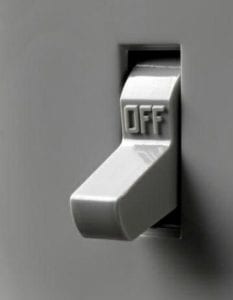Keys to Energy Independence – Part 1: Conservation
 In order to achieve energy independence in our homes, we need to create a net-zero energy home. In short, this is where we produce as much energy as we consume using any number of renewable forms of energy. To do this, though, we need to use renewable energy conservatively and efficiently. This is the first in a three part series addressing the three legs of the stool of energy independence.
In order to achieve energy independence in our homes, we need to create a net-zero energy home. In short, this is where we produce as much energy as we consume using any number of renewable forms of energy. To do this, though, we need to use renewable energy conservatively and efficiently. This is the first in a three part series addressing the three legs of the stool of energy independence.
Conservation should be the no-brainer, but reprogramming our brains and behaviors is probably the most difficult challenge. In the era of cheap energy, there wasn’t a great deal of incentive to turn out lights or turn off appliances. However, just as you would conserve precious water in the desert, we can learn to conserve energy in our homes.
When Jimmy Carter first suggested that one way to conserve energy was to turn down the thermostat and put on a sweater, he was scoffed at by many Americans. We had just emerged from a time when horsepower under your hood was a status symbol, and our trophy cities boasted high-energy lights and fast freeways. So when Ronald Reagan assumed the presidency, one of the first things he did was to remove the solar panels from the White House. Our pride was largely based on our power, and the flamboyant use of energy was a way of showing that power.
What’s amazing is the growth in electronics in our homes. We have digital clocks and phones, multiple computers, printers and network equipment, home theaters and boom-boxes, televisions and DVD players, VCRs and DVRs, fans and space heaters, plus power tools and all kinds of kitchen and bathroom appliances. While some of these devices are truly dormant when not in use, many of them continue to draw small amounts of power while waiting to be powered up. For example, anything with a remote control is in a ready-state – waiting for the signal from the battery-powered remote. We can find chargers for our laptops, cell phones, digital cameras, and personal music players all over the house, and even when they’re not charging the device, they continue to consume power, which is distributed as heat.
Some of the stealthiest energy vampires are those digital picture frames that are currently all the rage. It is estimated that by the end of the year, more than 20 million units will have been sold in the United States. Here’s the alarming concern. According to the Electric Power Research Institute, if every household in America owned a digital picture frame and let them run 24 hours a day 7 days a week (which they do unless you turn them off), it would require five 250 megawatt power plants to provide the electricity to run them. Are you getting the picture?
So, while our parents harped on us to turn off the lights, we need to get down and unplug the appliances. I know some people need to break the habit of leaving a television on for background noise (or powering up the flat screen while we play digital music on the satellite radio!) But in the average home, nearly 75% of all electricity used to power electronics is consumed by products that are switched off. One solution is to plug non-essential electronics (obviously not clocks) into a power strip, and turn it on only when needed. Turning it off when you turn off the power is the only way to turn it truly off. New building technologies are enabling lighting and appliances to be controlled remotely through a web interface, with programmable schedules for shutdowns. Another popular money-saver is the occupancy sensor, which automatically turns lights on when you walk in a room, and off when there’s no activity in the room for a programmable duration.
While these are just a few of many ways to conserve power, a much larger gain can be achieved with energy efficiency. This will be covered in the second of the three-part series.
This was published in the Going Green section of the December 2009 issue of Spirit Seeker magazine.

